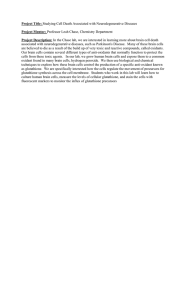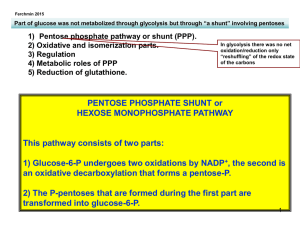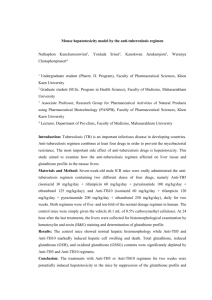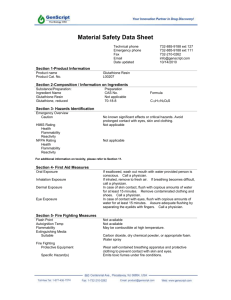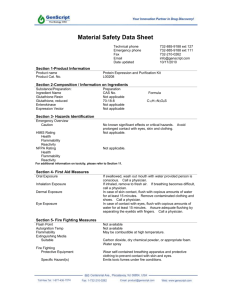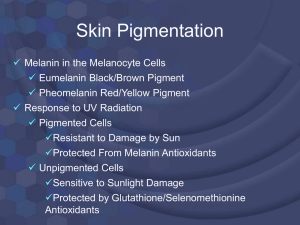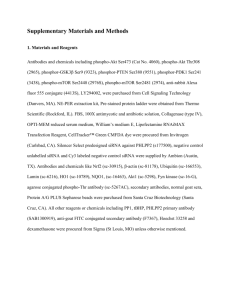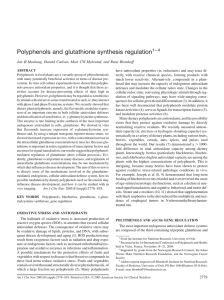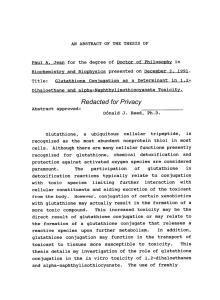It may not protect against a bad
advertisement
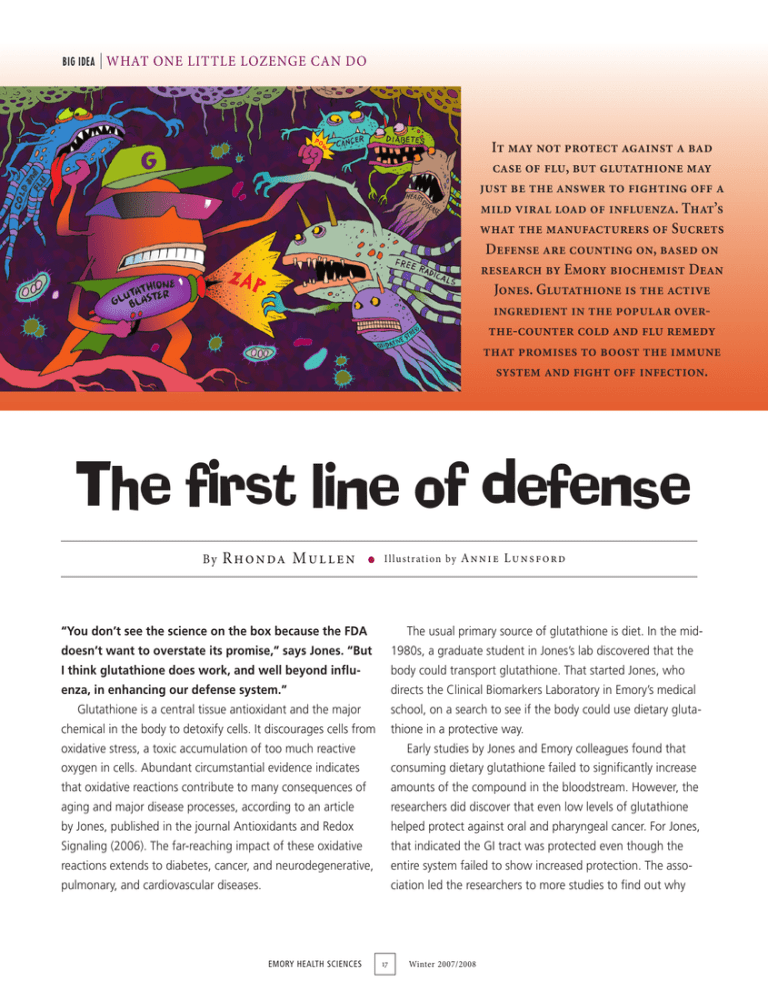
Big Idea What one little lozenge can do It may not protect against a bad case of flu, but glutathione may just be the answer to fighting off a mild viral load of influenza. That’s what the manufacturers of Sucrets Defense are counting on, based on research by Emory biochemist Dean Jones. Glutathione is the active ingredient in the popular overthe-counter cold and flu remedy that promises to boost the immune system and fight off infection. The first line of defense By R h o n da M u l l e n • I l lu s t r at i on by “You don’t see the science on the box because the FDA A n n i e L u n s f o rd The usual primary source of glutathione is diet. In the mid- doesn’t want to overstate its promise,” says Jones. “But 1980s, a graduate student in Jones’s lab discovered that the I think glutathione does work, and well beyond influ- body could transport glutathione. That started Jones, who enza, in enhancing our defense system.” directs the Clinical Biomarkers Laboratory in Emory’s medical Glutathione is a central tissue antioxidant and the major school, on a search to see if the body could use dietary gluta- chemical in the body to detoxify cells. It discourages cells from thione in a protective way. oxidative stress, a toxic accumulation of too much reactive Early studies by Jones and Emory colleagues found that oxygen in cells. Abundant circumstantial evidence indicates consuming dietary glutathione failed to significantly increase that oxidative reactions contribute to many consequences of amounts of the compound in the bloodstream. However, the aging and major disease processes, according to an article researchers did discover that even low levels of glutathione by Jones, published in the journal Antioxidants and Redox helped protect against oral and pharyngeal cancer. For Jones, Signaling (2006). The far-reaching impact of these oxidative that indicated the GI tract was protected even though the reactions extends to diabetes, cancer, and neurodegenerative, entire system failed to show increased protection. The asso- pulmonary, and cardiovascular diseases. ciation led the researchers to more studies to find out why Emory Health Sciences 17 Winter 2007/2008 Big Idea What one little lozenge can do those cells, blocking activation of virus particles and stopping a conversion of the cells to an active form.” Emory received a patent for the findings, then licensed use of that research to a commercial firm, which sublicensed it to produce and market related products. Sucrets Defense is the first product to bring the discovery to market. Fluctuating levels of protection Jones’s research on glutathione is hardly over. He is working on several projects with colleagues throughout the Woodruff Health Sciences Center to see how far glutathione’s protective effects extend. These investigations include the role of glutathione in an overactive immune system with immunologist Cornelia Weyand, glutathione’s role in gastrointestinal health with endocrinologist Tom Ziegler, its relationship to atrial fibrillation with cardiologist Sam Dudley, glutathione’s effects on fibrotic lung disease with pulmonologist Jesse Roman, and the role of glutathione on neurologic disease with neurologist Gary Miller. In one recent study, Jones tracked oxidation levels, finding that they are higher in the morning, placing people in a vulnerable state in which their bodies are less able to guard against infection. However, as the day begins, as people rise and eat, their oxidation levels fall and they become more resistant to infection. At night, the levels rise again while people sleep. Jones has an explanation for the changing levels. “We run out of food during the night,” he says. “Our defenses decline because there are only minimal reserves of dietary glutathione to carry on the fight.” He believes that concept bolsters the argument that a glutathione supplement will work. “If you are able to pop something in your mouth at vulnerable times of oxidation, you may be able to use your first line of defense to fight off infection,” he says. “The supplement can mitigate the risk, which is manifest in times and places where infection occurs—when people are tired and stressed, when they are using public transportation, or even when they are sitting in the sun at a baseball game. This approach is very different from a vaccine, which offers long-term immunity. Yet it can still be effective.” Biochemist Dean Jones developed the patents that support the science behind Sucrets Defense. metabolism and absorption of glutathione are more important for the oral and GI tract than for the rest of the body. Bottom’s up: beer’s contribution to flu protection As Jones continued to explore the impact of dietary glutathione, he received a related proposal from an interesting source. A Japanese beer maker invited him to help find a use for yeast cakes, a by-product of the fermentation process. These nutrition cakes, which contain approximately 2% glutathione, promised a regular commercial supply for a product if an application could be identified. Jones, who himself had eaten yeast cakes for their nutritional value as a high school wrestler, set about to find such an application. He wondered if the cakes could offer various viral protections and, if so, along which route. More specifically, if he added glutathione to a supplement, could it protect against flu? Jones developed a study using human epithelial airway cell cultures and later a mouse model to see if the hypothesis held. He found that glutathione failed to protect against influenza with a high viral load. However, at lower levels of infection, the glutathione supplement did produce a noticeable protective effect. “The glutathione allowed the epithelia to provide the first line of defense,” says Jones. “It changed the character of Emory Health Sciences • 18 Winter 2007/2008
